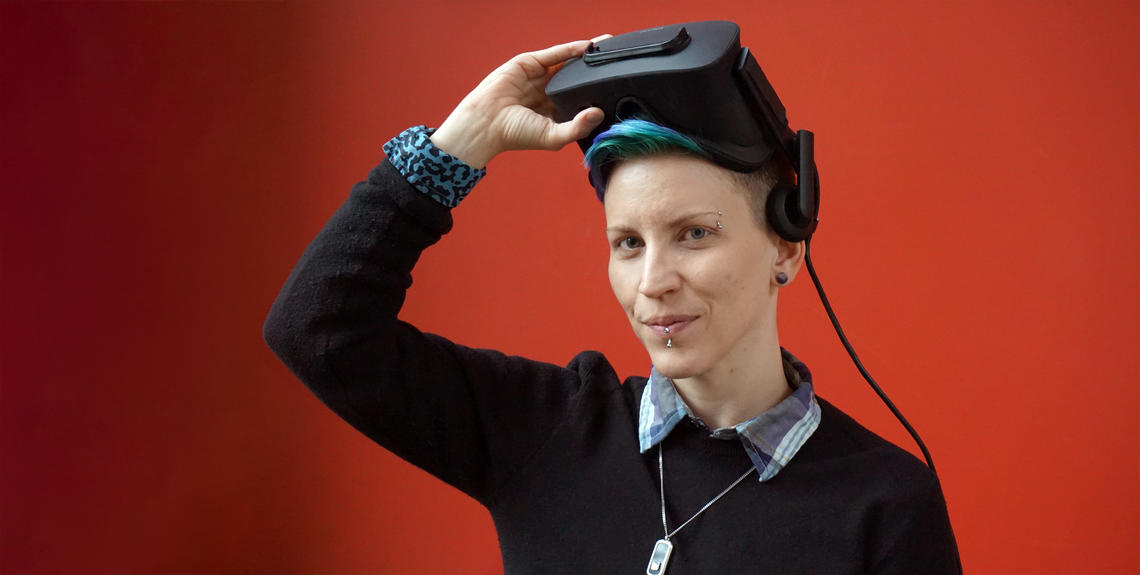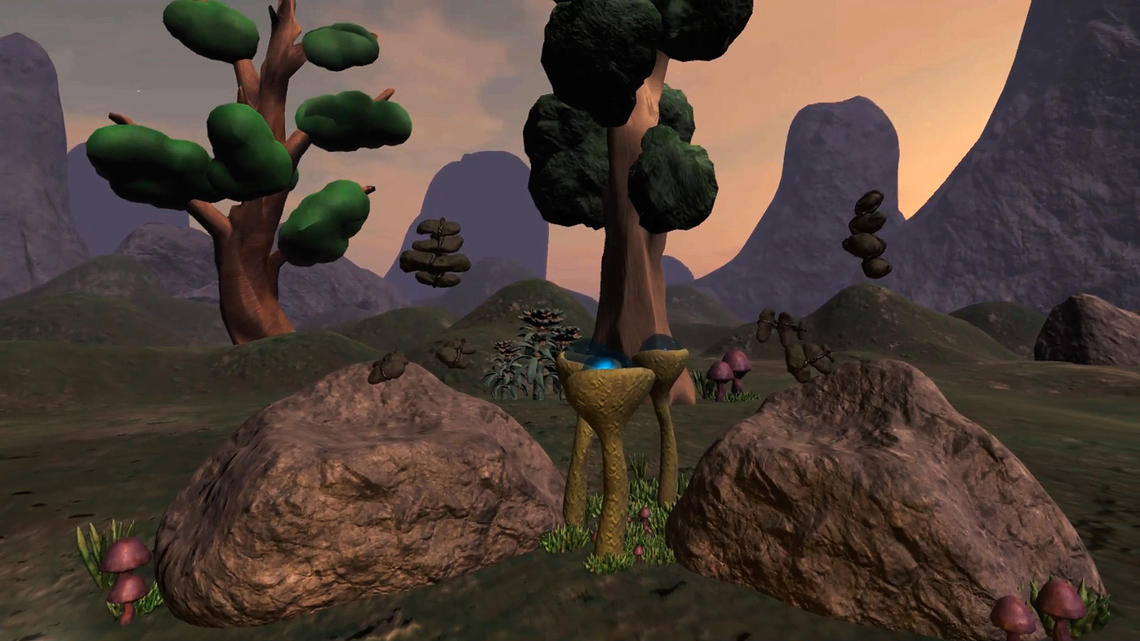Sept. 19, 2018
Gather around a virtual campfire, complete with fire-crackling sound effects, for some LGBTQ storytelling

Dylan Paré hopes the stories shared will provide a voice for marginalized groups working in STEM.
Clayton MacGillivray, Werklund School of Education
Storytelling is one of the oldest and most powerful techniques used for teaching and learning; it serves to create empathy and understanding, bear witness, and reinforce or challenge ideas. Challenging ideas is what Dylan Paré, a PhD student in the Learning Sciences at Werklund School of Education, hopes to accomplish on Wednesday, Sept. 19 with their Beakerhead LGBTQ Narratives experience.
The exhibit in the Alumni Lounge at the Taylor Family Digital Library allows visitors to immerse themselves in a multi-user, participatory, virtual reality (VR) environment along with their friends. Together, they can listen to three queer and trans stories of marginalization in STEM fields, as well as share their own stories. Paré, who designed this VR environment in collaboration with Scout Windsor, John Craig and Dr. Pratim Sengupta, PhD, says the campfire setting was purposefully crafted.
“The virtual campfire, complete with fire-crackling noises, is a prototypical storytelling scene. The virtual environment is designed to encourage a sense of calm so that our sense of who we are can be re-imagined, as what has been silenced re-emerges.” Participants entering the virtual reality environment (below) will find themselves seated around a campfire and can touch dewdrops inside bowl-shaped plants to activate the narratives.
Just as the setting is carefully crafted, so too are the narratives. Each story runs approximately one minute in duration and details the author’s personal experience of having been silenced. The first speaker discusses how being gender non-binary, queer and assigned-female led to exclusion from male-dominated technology-learning spaces as well as exclusion from “ladies learning code” spaces, the second author reflects on societal expectations to perform toxic masculinity and how it affected his ability to be himself at work, while the final story outlines how assigned-female people in technology fields must be careful not to upset men who lack technical proficiency.
Paré says experiences such as these have created an unwelcoming atmosphere that is responsible for significant difficulties in recruiting and retaining marginalized individuals in STEM fields.
“We need to create spaces for marginalized groups, including women, racialized people, and gender and sexually diverse people, to live and be recognized in their identities within STEM fields because who we are matters for what we do, and who we are with shapes our learning experience.”

The virtual reality environment aims to incorporate multiple senses in order to activate narratives.
Dylan Paré
Sengupta, research chair of STEM education and director of the Werklund School’s Mind, Matter and Media Lab, is Paré’s PhD supervisor and says their use of virtual reality technology allows participants to immerse themselves in worlds and engage in conversations that might be outside the scope of their usual experiences.
“Learning scientists have shown that projections in virtual worlds through the use of virtual agents — the fundamental form of experience in VR environments — can help people take on perspectives that would be otherwise difficult for them to adopt," Sengupta says. "In fact, previous research from our lab has shown how the use of virtual agents can support sense-making and deep learning of complex topics, even at much younger ages than what was previously possible.”
Sengupta adds that it is important for education researchers to develop new technologies to support new ways of engaging in STEM disciplines that do not ignore our marginalized and intersectional identities. “We can re-shape STEM disciplines to be queer and inclusive by fundamentally altering the technological infrastructure in these disciplines — quite literally by inventing and re-inventing them.”
This is what doctoral students in the Mind, Matter and Media Lab have been doing, often in collaboration with local and community partners. Paré and Sengupta, for example, designed the VR environment along with VR and 3D artist Scout Windsor and John Craig, a local technologist and a research affiliate of the lab.
Paré says they want those who listen to the stories — and talk about the stories with their friends in VR in an intimate setting — to come away with a different understanding of the connection between technology and human beings.
“I hope that people will gain new perspectives on critical approaches to gender and sexuality in the design of technology and will gain insight into how our identities affect our relationships to technology and to each other through technology.”
Libraries and Cultural Resources hosts Campus Collisions, a Beakerhead community event inside the Taylor Family Digital Library. Sept. 19 and 20 will be packed with talks, demos, workshops and other events. These events, including LGBTQ Narratives, are free and open to everyone. Visit the website for full details.
